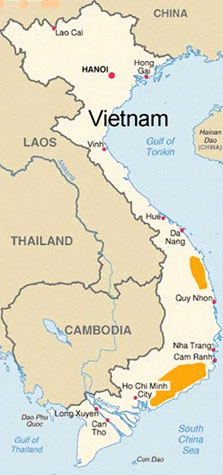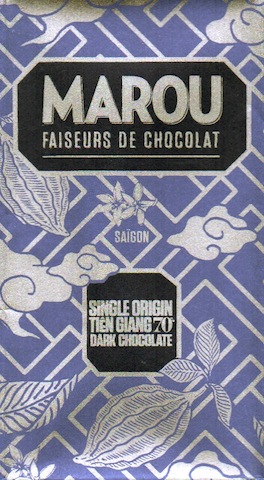 FLAVOR: under development & pending with, so far, emergent Spices ‘n Herbs though the cacáo here seems regionally-dependent, ranging from simple Naked chocolate to sharp fruit
FLAVOR: under development & pending with, so far, emergent Spices ‘n Herbs though the cacáo here seems regionally-dependent, ranging from simple Naked chocolate to sharp fruit
CHARACTERISTICS: T 1 – 13 clonal series, probably of Malay & Costa Rican roots, constituted by genotypes Nanay, Amelonado + some lesser Criollo / Trinitario crosses; cacáo pulp expresses a sweet ‘n sour combo; reportedly undergoes up to 9 days of fermentation
The story of cacáo taking root in Vietnam parallels that of another island nation in Oceania – Madagascar. Both share a French connection.
Dr. Alexandre Yersin, an understudy to Louis Pasteur, is believed to have introduced cacáo to Vietnam in 1878 during the gilded age. It failed to flourish however & only a few cacáo trees in the Mekong Delta remain as the offspring of Yersin’s venture.
Fast forward a century later… with the Viet Cong victorious over, first, French colonial administration &, then, the American military (which ferried in 8,000 cacáo trees under the cover of USAID — United States Agency for Int’l Development), its main patron the USSR (Russia) saw in Vietnam a cocoa producer to meet demand back home & elsewhere across the Soviet empire. But the collapse of the Soviet Union left Vietnamese growers without a viable export market.
Cacáo lay dormant here until Dr. Pham Hong Duc Phuoc jumpstarted things very early in the 21st century as part of his research at Nong Lam University.
By 2005 “Western Powers” like the WWF (World Wildlife Fund), Mars & the Dutch Ministry of Agriculture fueled his work by way of funding & technical advice with a project centered at Nam Lam University. They’re now bombing the countryside with millions of seedlings instead of B-52s in the hopes of tooling Vietnam as a hedge against political instability & crop inconsistency in the candy industry’s 2 main geo-supply points — West Africa and Indonesia.
Distributed among 12,000+ growers who typically cultivate on plots of 1 to 3 hectares, cacáo stands among rice paddies & water buffalo in this land with an advanced yet ancient agricultural tradition, including drip irrigation & liquid fertilizers.





